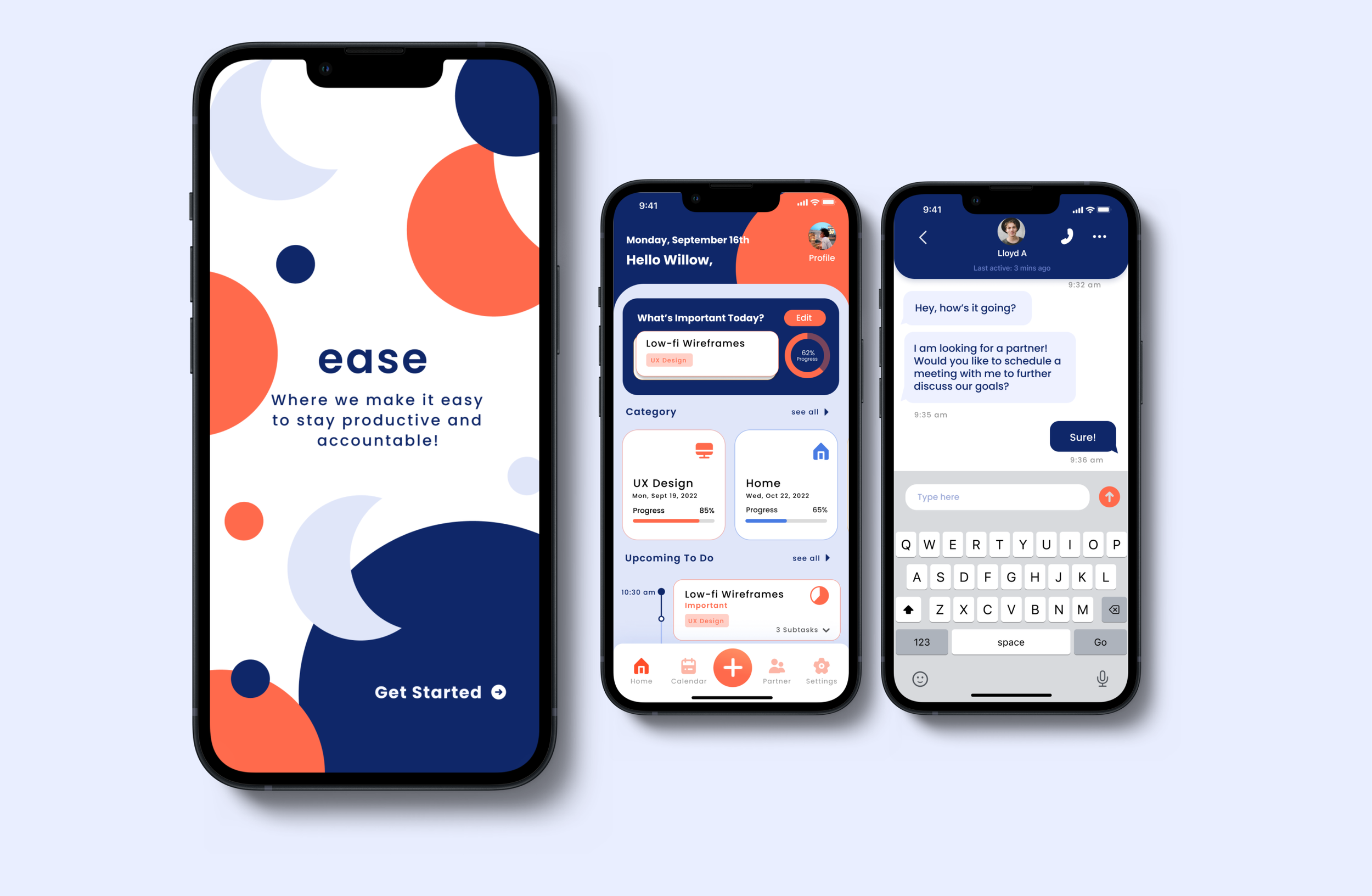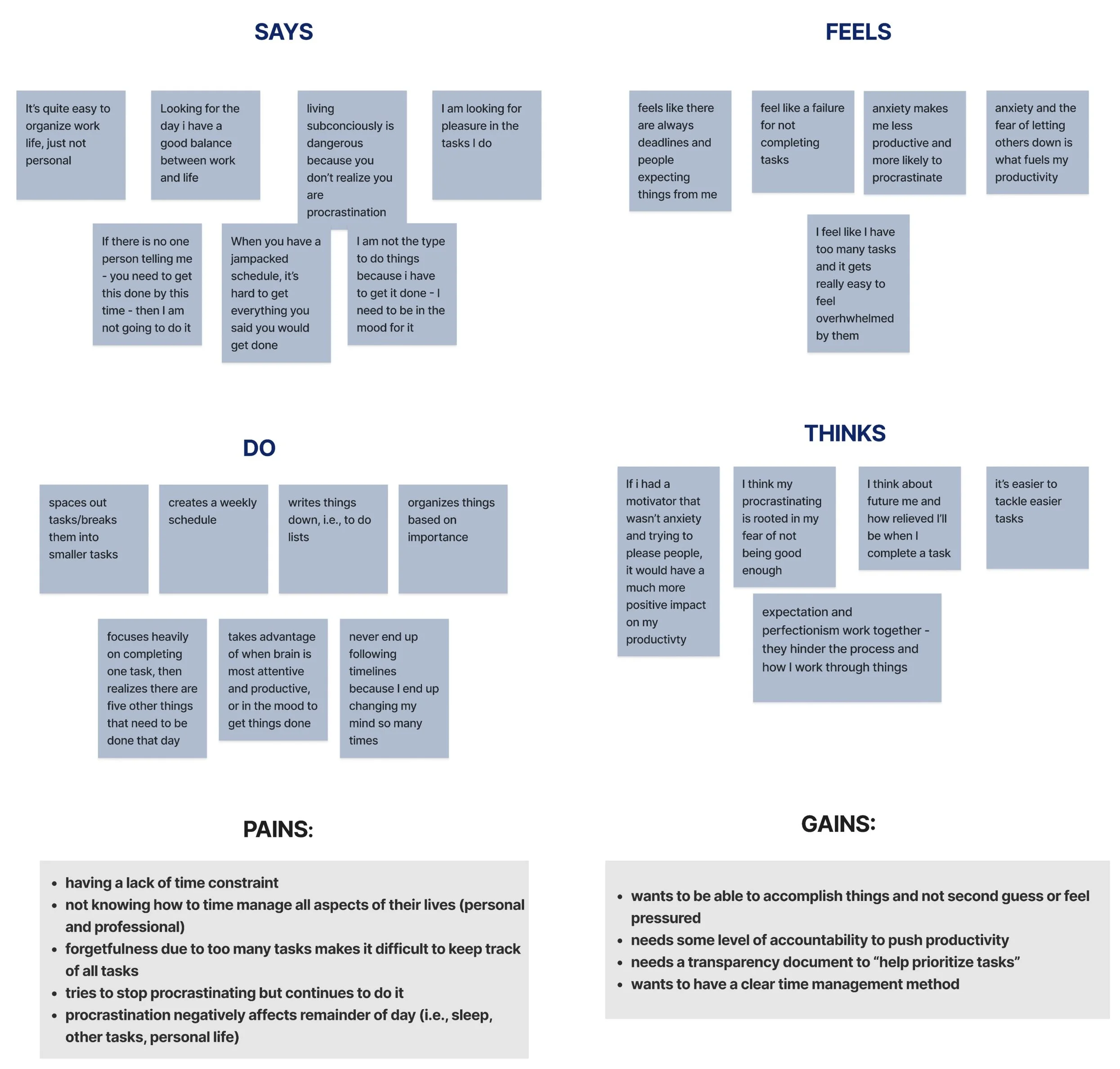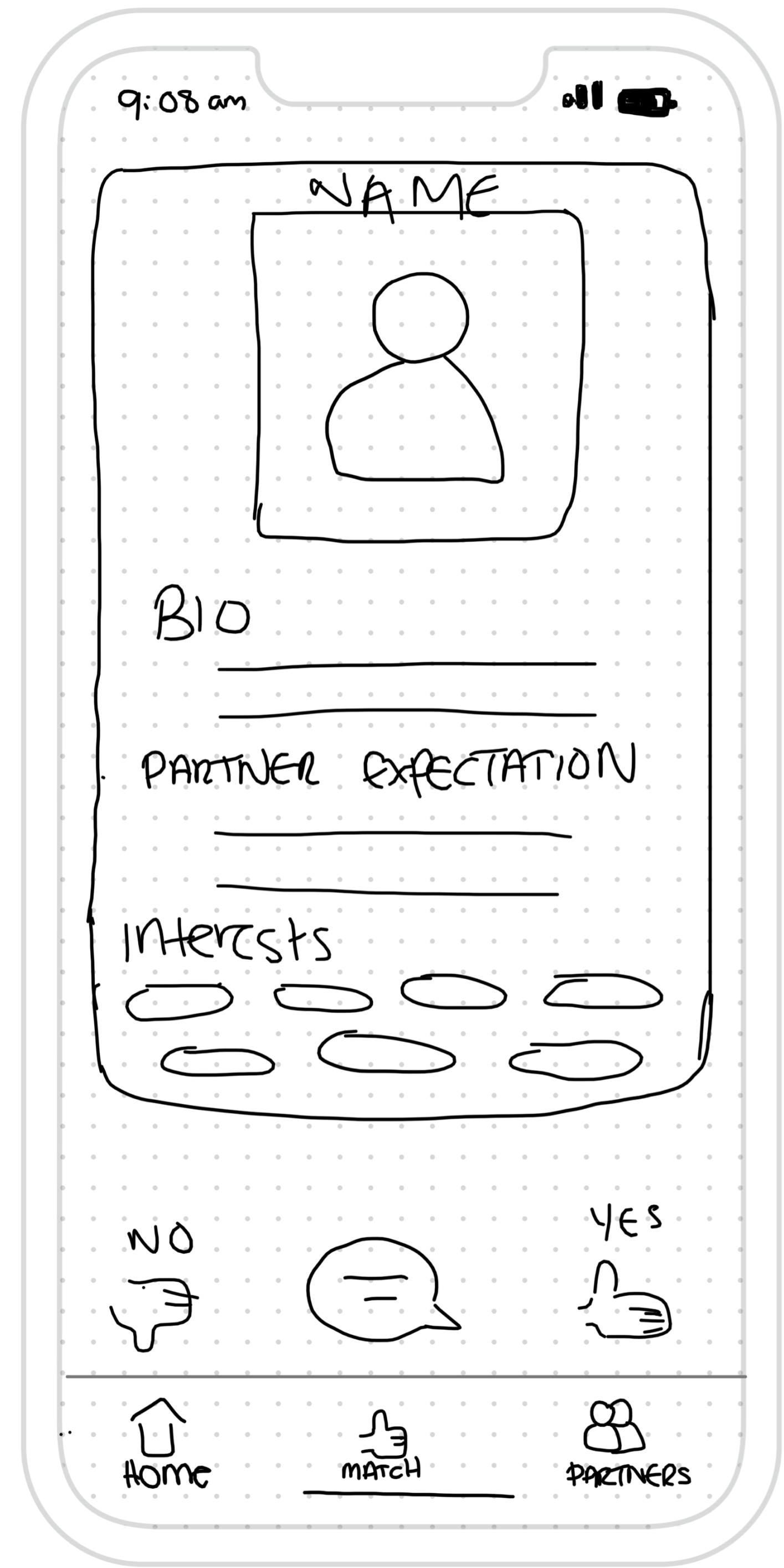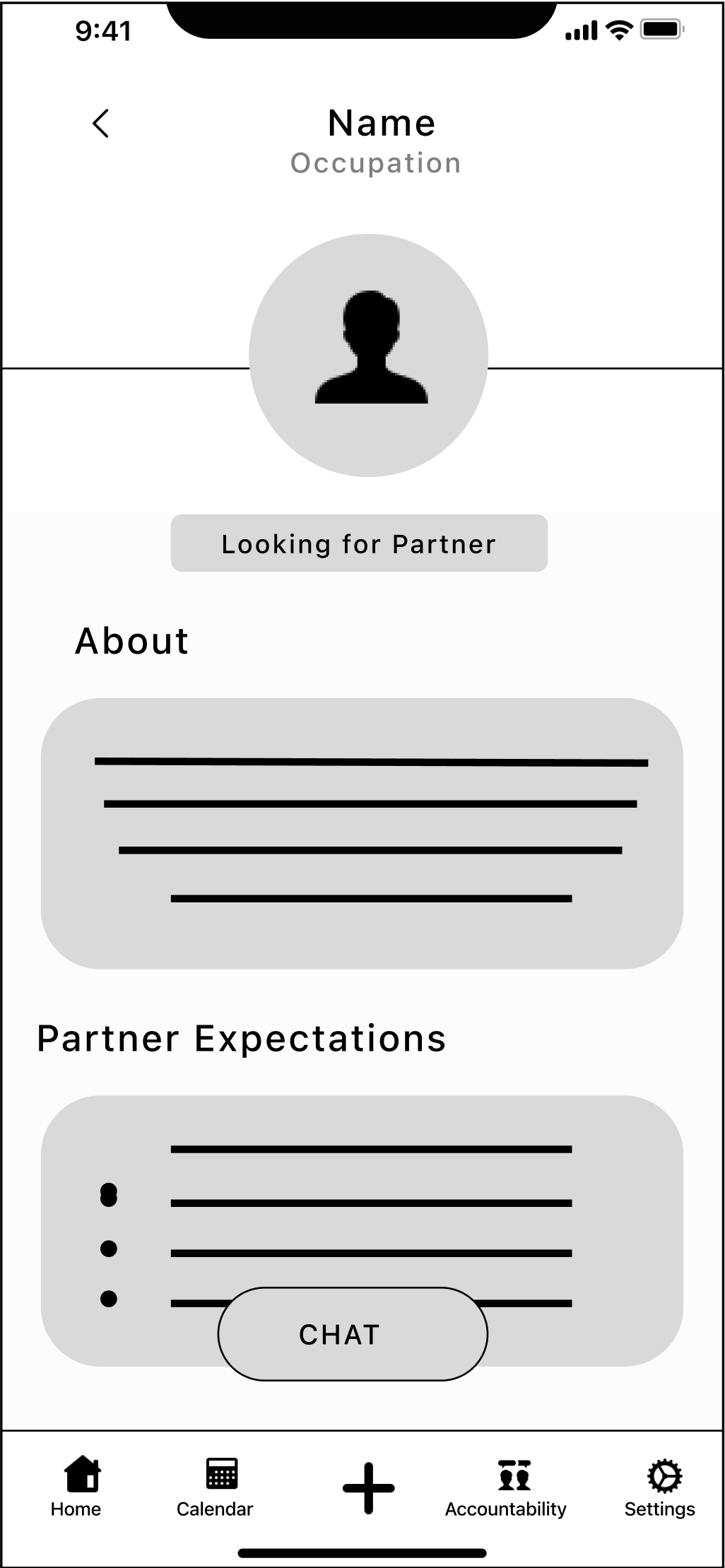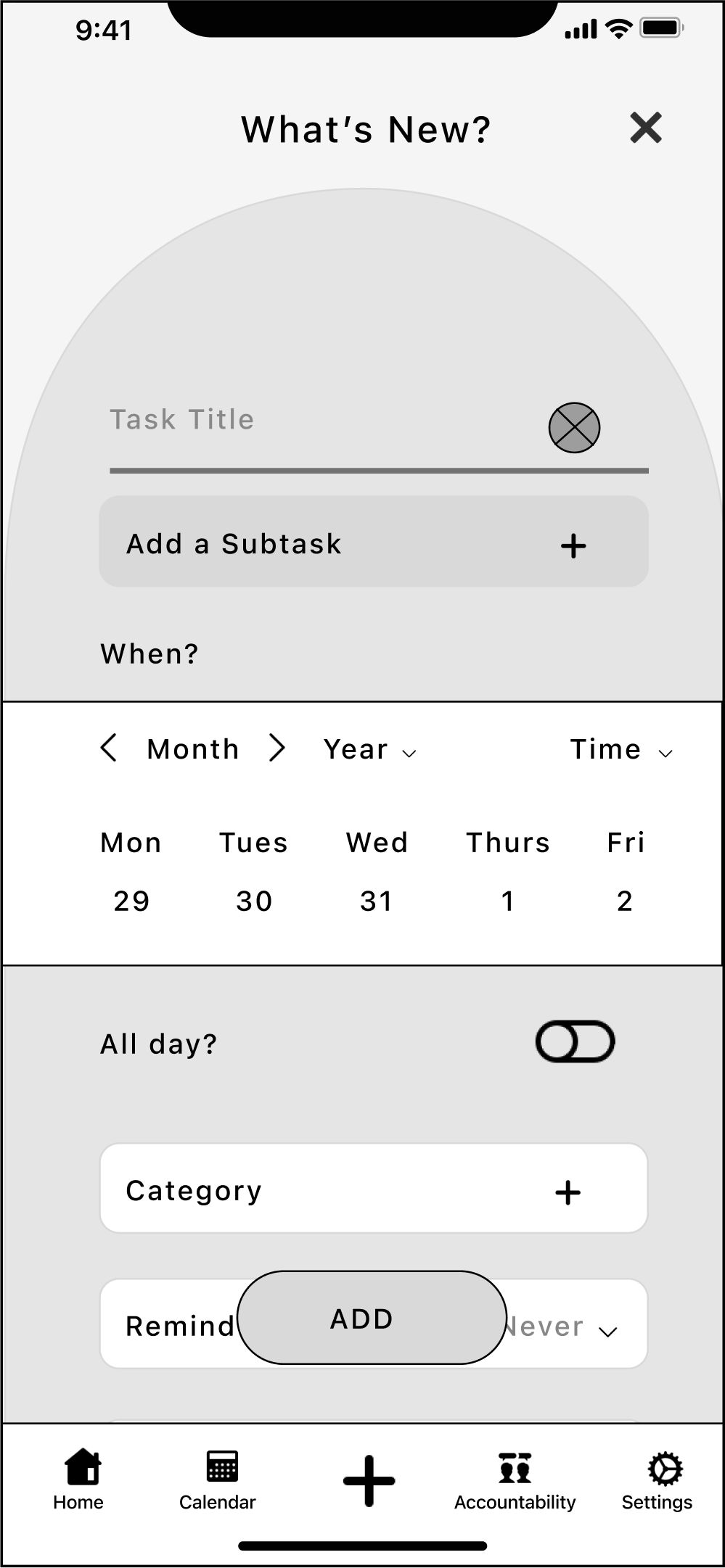ease
Product Design | UX Design & Research
OVERVIEW
Ease is a conceptual time management and accountability app that was created during my UX design program. To limit procrastination habits, Ease aims to provide users with a platform for organizing daily tasks and working with accountability partners to achieve their goals.
ROLE
Designed the end-to-end product design experience, working closely with my mentor to improve the design solution
TIMELINE
13 Weeks, from July 2022 to October 2022
TEAM
Solo Designer, with guidance from my mentor
THE PROBLEM
Individuals fail to complete important tasks due to frequent procrastination.
Through personal experience, whether academically or personally, I have occasionally found myself in the position of delaying tasks. In addition, some people in my life have also said it takes longer than usual to complete important tasks because of procrastination. This sparked an interest in me to find out why we procrastinate.
THE SOLUTION
Provide individuals with a tool that can help them stay productive and accountable toward their goals without overwhelming feelings of anxiety.
With Ease, individuals can access all their important daily tasks with the touch of a button, while also gaining access to accountability partners that can help them further reach their goals.
THE RESEARCH
Uncovering the problem through literature.
Through secondary research, the main objective was to understand the following:
1. What causes individuals to procrastinate?
2. Why do people continue to procrastinate despite having multiple tasks to complete?
3. How do people keep track of and prioritize their tasks?
4. Do people want to limit their procrastination habits?
With these questions in mind, I reviewed various articles on the topic of procrastination, productivity, time management, and motivation. An interesting insight, which laid the foundation for most of the research, from a journal article by Piers Steel (2007) stated:
“Procrastination is also strongly influenced by psychological factors such as low confidence in one’s ability to perform and the inability to cope with negative emotions that arise in challenging situations such as anxiety and perfectionism.”
THE STATS
Before I conducted interviews, I wanted to get a gist of the demographics, to see which group faces difficulty the most, and to hear their experiences. Of the 36 respondents to my survey on productivity and time management...
55.2%
Procrastinate very often
57.1%
Easily overwhelmed with too many tasks
55.2%
State their procrastination depends highly on the task
USER INTERVIEWS
Listening to real experiences.
From the survey, I recruited 5 participants to discuss their personal experiences with procrastination and time management. During these interviews, I focused on asking open-ended questions (listed below) about their experiences. The main goal was to find trends on why people struggled with procrastination and what could help them.
Tell me about your personal experience with procrastination
Tell me about a time you last procrastinated
How do you choose to manage your important tasks?
What would make it easier for you not to procrastinate?
“If there isn’t one person telling me to get something done by a specific time…it won’t get done because I’m not going to do it”
SYNTHESIS
“If there isn’t one person telling me to get something done by a specific time…it won’t get done because I’m not going to do it”
After having in-depth conversations with each participant, I synthesized all the information into an aggregated empathy map and affinity map to highlight similar themes, pain points, and habits among the interviewees.
Interviewees believed that their procrastination was mostly influenced by a lack of accountability
A lot of interviewees stated that their mental health played a significant impact on their level of productivity
Interviewees did not address having a set time management routine - it varied
Interviewees want to live healthier lifestyles but are frustrated with not knowing how to properly time manage
Aggregated Empathy Map
PERSONA
Meet Sophie: The Perfectionist
The interviews allowed me to better understand common problems individuals face when it comes to procrastination. In order to best highlight the problem space and design a solution, I developed a user persona to help guide the rest of the design.
HOW MIGHT WE?
Putting everything together…
I made sure to place emphasis on concrete pain points in order to help in brainstorming various solutions to this problem. My questions for designing a solution revolved around three significant pain points:
Providing accountability: How might we provide ways for users to stay accountable to limit their procrastination habits?
Eliminating Anxiety: How might we make tasks feel less overwhelming?
Creating Work/Life Balance: How might we help users efficiently time manage their lives in a way that best fits their needs?
DESIGN AND IMPROVEMENTS
Sketches to wireframes
After establishing a site map and user flow, I began with creating sketches that were later tested through guerilla user testing. Some important findings included:
Confusion with both the tasks and calendar page: users had difficulty distinguishing the difference between the two pages
Matching with an accountability partner: Users commented that this feature felt too similar to using a dating app
With this feedback in mind, I translated my sketches into low-fidelity wireframes in Figma.
TESTING + IMPROVEMENTS
What do users think?
After designing high-fidelity screens, I reached out to participants from user interviews to understand how users felt about the app design in terms of its UI, and overall user experience. The main tasks included in the test were:
Task 1: Sign in and create a profile
Task 2: Go to the homepage and add a new task to the to-do list
Task 3: Find an accountability partner using the accountability feature - chat with them!
Task 4: Schedule the next meeting with your new accountability partner
Based on the feedback from 10 user testing participants, along with mentor feedback, I iterated on my design and improved on three major issues users faced.
The Homepage
Based on user testing, it was more clear to have users navigate to the homepage first instead of their profiles
Altered the way in which users viewed their important tasks of the day
Decluttered the homepage to make it less visually distracting
UI Inconsistencies
Improving choice options for onboarding questions allows for less confusion among users
Adding labels under category names improved user understanding
Adding Friends
Provided users the ability to add/share tasks with friends when adding a new task to their to-do list
The invite friend feature allows users to seek out their companions as accountability partners
FINAL DESIGN
Ease: The Final Product
THE STYLE GUIDE
Ease was designed with the intent of promoting productivity and allowing individuals to live healthier lifestyles without stress or anxiety - therefore, I wanted the visual system to feel uplifting and encouraging with bright and eye-opening colors. According to color psychology, blue and orange are two colors that work well together and also promote motivation and productivity.
CONCLUSIONS AND REFLECTION
What would I do differently?
If I had more time, I would:
Explore various ways individuals seek accountability, especially in terms of methods and tools
Consider a responsive design - what would this experience be like on a different device?
Continuously improve accessibility to better adhere to the WCAG standards
Key Takeaways
This project taught me the importance of seeking feedback from mentors, peers, and users, because having a different perspective on the same problem led to better design choices and a better design overall. In addition, the importance of asking “why?” for every design choice helped me discover the intentionality and purpose behind Ease.

